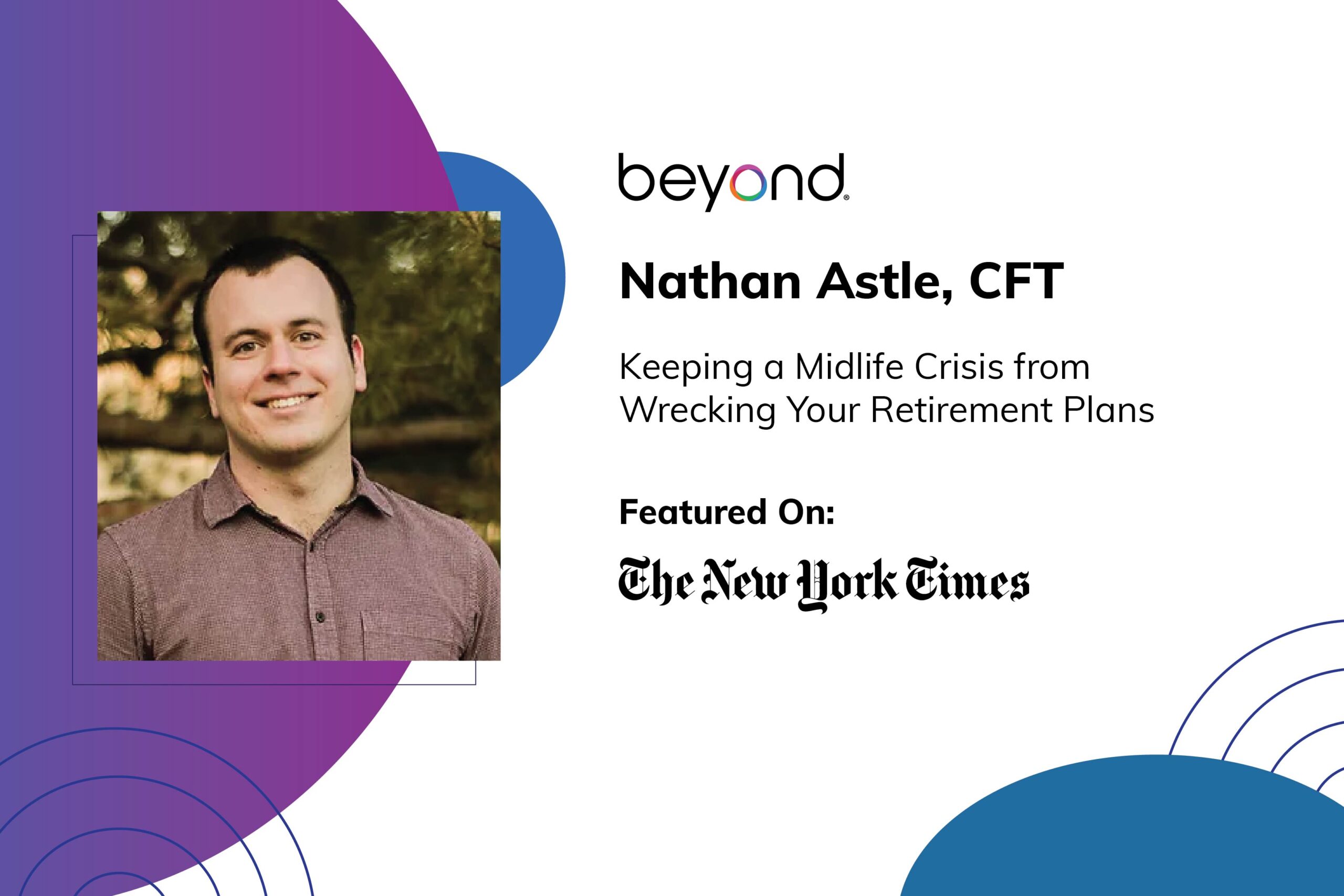Whenever a middle-aged person decides to buy something to make them feel a little younger (e.g., a convertible car, plastic surgery, a pied-à-terre), others may rush to conclusions about a “midlife crisis.” The New York Times wrote an article about a midlife crisis, but from a different vantage point.
“How does a midlife crisis ruin someone’s retirement plan?”
The article’s author asked financial experts to discuss that aspect of this shopping bonanza, including Beyond Finance Client Counselor and Founder of the Financial Therapy Clinical Institute, Nathan Astle, CFT. The author begins the article by discussing how a milestone connected to age (i.e., 50th birthday, becoming an empty nester) can “provoke uncertainty” about the future. That uneasiness could influence spending.
“Feelings drive behaviors,” Nathan said. “If you feel dissatisfied with your life, you might buy a new wardrobe or spend on cosmetic procedures. Or if you’re seeking excitement, you might splurge on big-ticket items like travel or expensive wine.”
He continues by talking about the rush of energy shopping creates. “Spending isn’t seen as a problem; it’s mistaken as a solution.”
The article discusses other psychological ways to prevent this from happening to you or someone you know. Items shared include being wary of “lifestyle creep,” using a “buy list,” and “stress testing” your bank account.
We encourage you to read the rest of this insightful article. If a midlife crisis bug has bitten you and you need help managing your debt, we have a free assessment you can take. No strings attached. No hassle, either. Just for your information. We’re here to help move you beyond debt.
